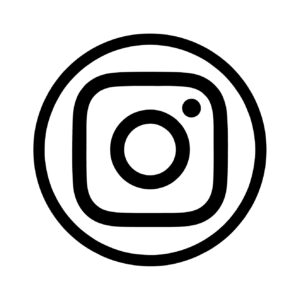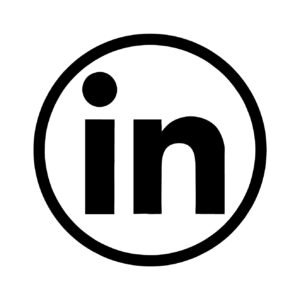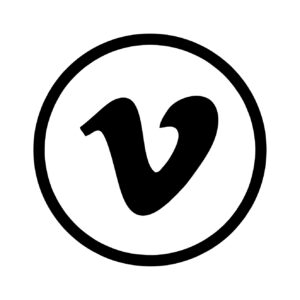The Workplace Watch Vol. 3

Welcome to another edition The Workplace Watch addressing the paradigm shift which is now unfolding in the workplace.
If the COVID-19 pandemic has revealed anything, it is that we are truly a connected global village, both isolated and interconnected, all at once. We should leverage the implications of this event to precipitate a shift in how we live and work, define cultural priorities, and influence policies.
In our third installment of this series we are focusing on the areas a building owner and manager will need to address in order to re-open for tenants and guests. Not only will public areas need to be properly treated and new protocols established, but buildings will need to communicate such actions to instill confidence and allay fears.
As with every sea-change, there’s a balance needed to elicit positive changes. The changes in process today should not only strive to ensure safety in the near-term, but provide long-term value. Watch for our next piece focusing on how developers of ground-up projects will need to adjust their playbook in the post-COVID-19 world.
 Arrival + Circulation
Arrival + Circulation
The entry sequence should set the stage for the building’s overall standards
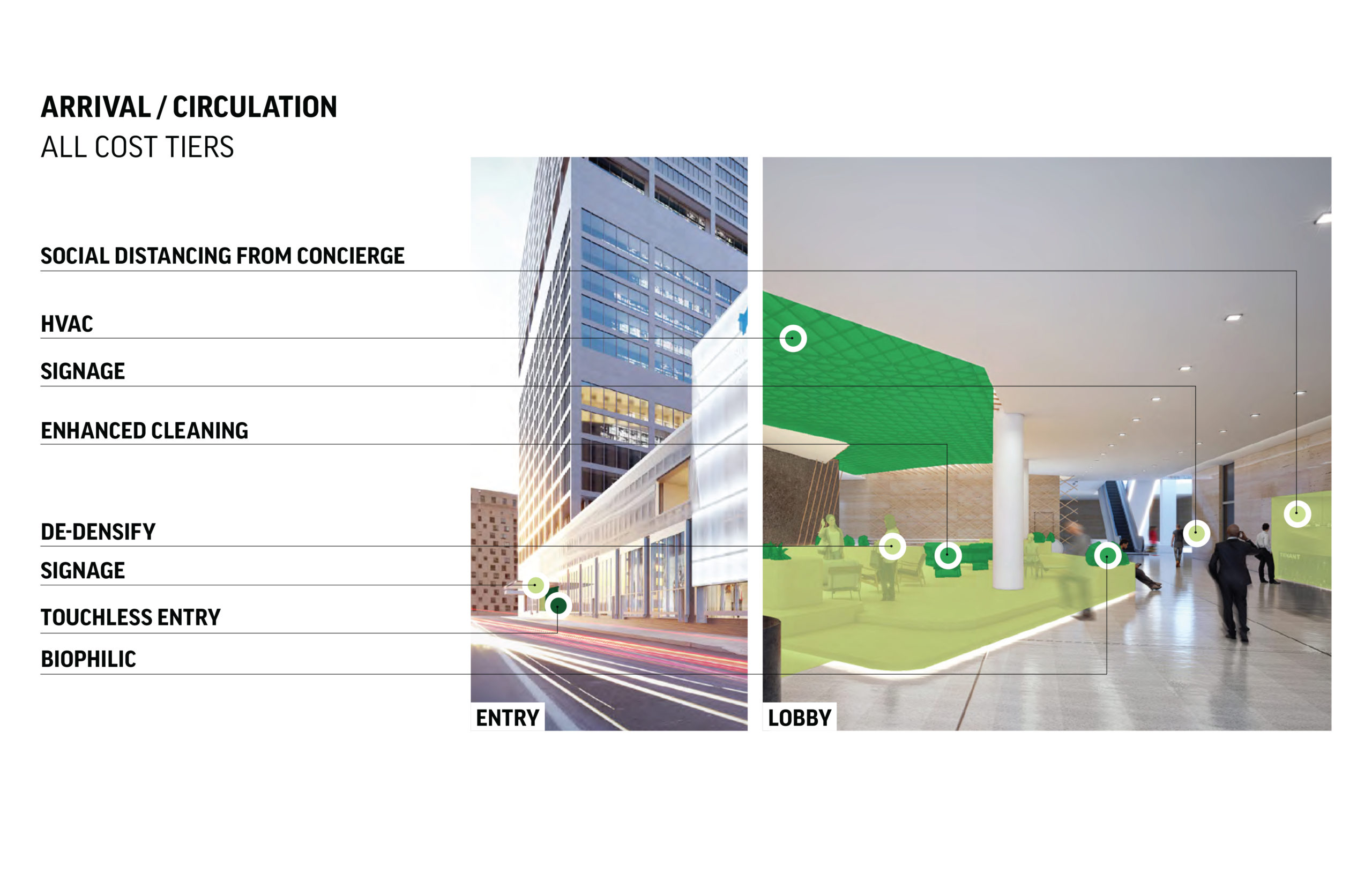
 |
 |
 |
- Hand sanitizer stations (1 week)
- Wellness + safety signage – see Spark kits (1 week)
- Spacial distancing of lobby furniture (1 week)
|
- Spatial distancing of security / concierge station (2 weeks)
- Infrared thermal monitoring (1-4 weeks)
- Introduction of germ-resistant materials (6-8 weeks)
- Enhanced HVAC filtrations (MERV) rating (4-6 weeks)
- Implement Biophilic attributes (4-6 weeks)
- Enhanced cleaning protocols (1 week)
|
- Touchless access to suites (6-8 weeks)
- Fresh air via HVAC setting / window access (4-6 weeks)
|
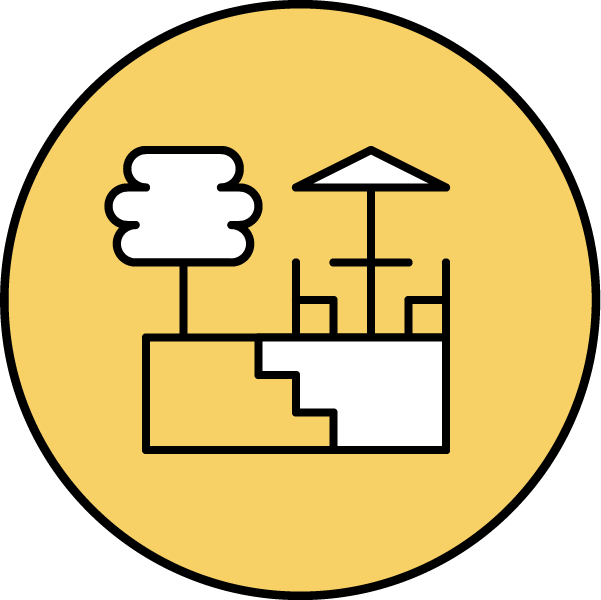 Common Public Spaces
Common Public Spaces
Public areas, including security and general circulation paths, need to project clear direction
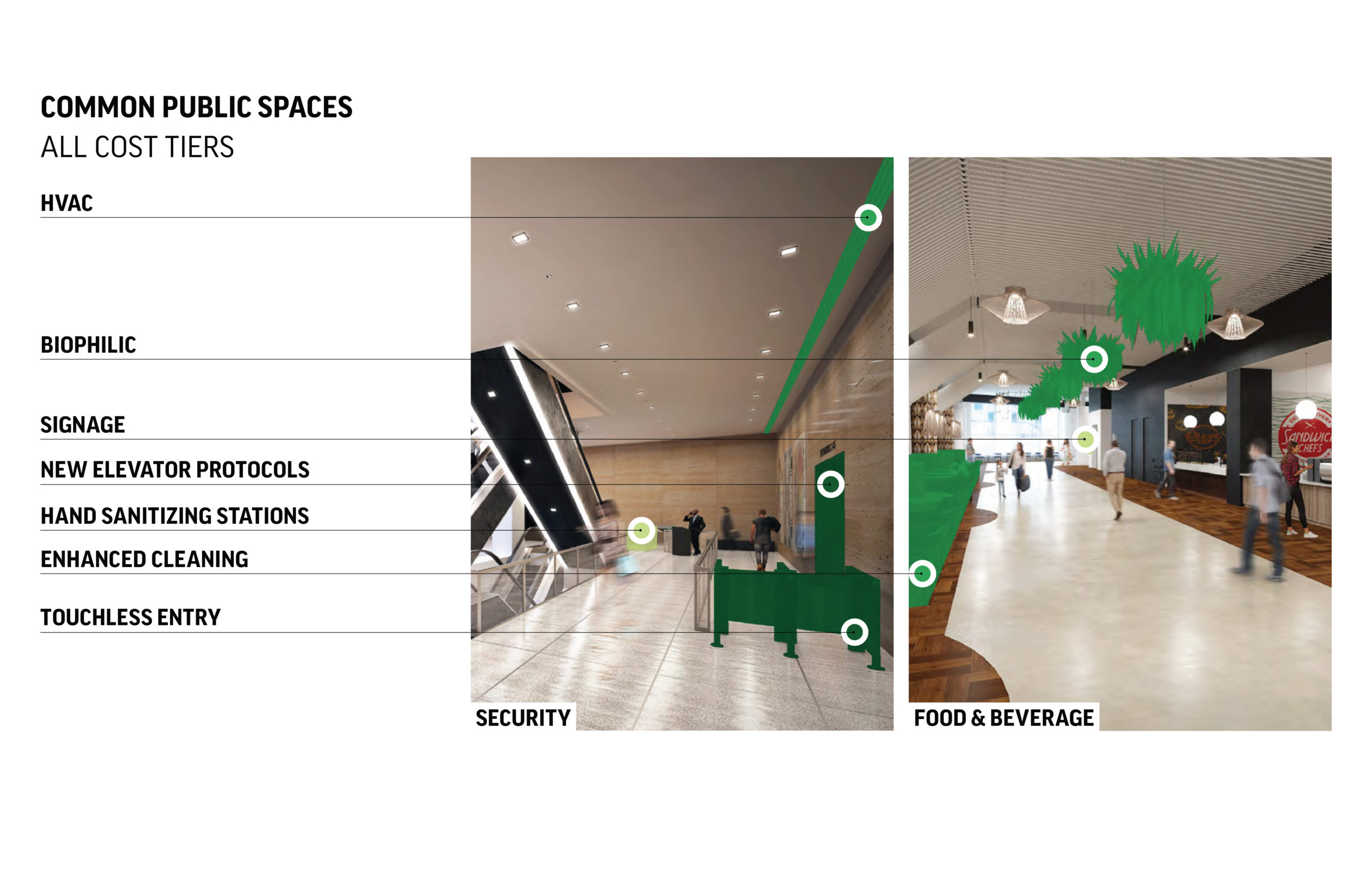
 |
 |
 |
- Wellness + safety signage – see Spark kits (1 week)
- Spatial distancing of shared furniture (1 week)
- Hand sanitizer stations (1 week)
|
- Implement Biophilic attributes (4-6 weeks)
- Enhanced cleaning protocols (1 week)
- Enhanced HVAC filtrations (MERV) rating (4-6 weeks)
|
- Entertain connecting stairs between floors (8-12 weeks)
- Introduction of germ-resistant materials (6-8 weeks)
- Reduced elevator capacity protocols / voice activated elevator controls (6-8 weeks)
- Touchless access at restrooms + public area suites (6-8 weeks)
- Touchless access at suites (6-8 weeks)
|
 Amenity Spaces
Amenity Spaces
Designed to attract and retain tenants, these gathering areas need to ensure safety protocols are met
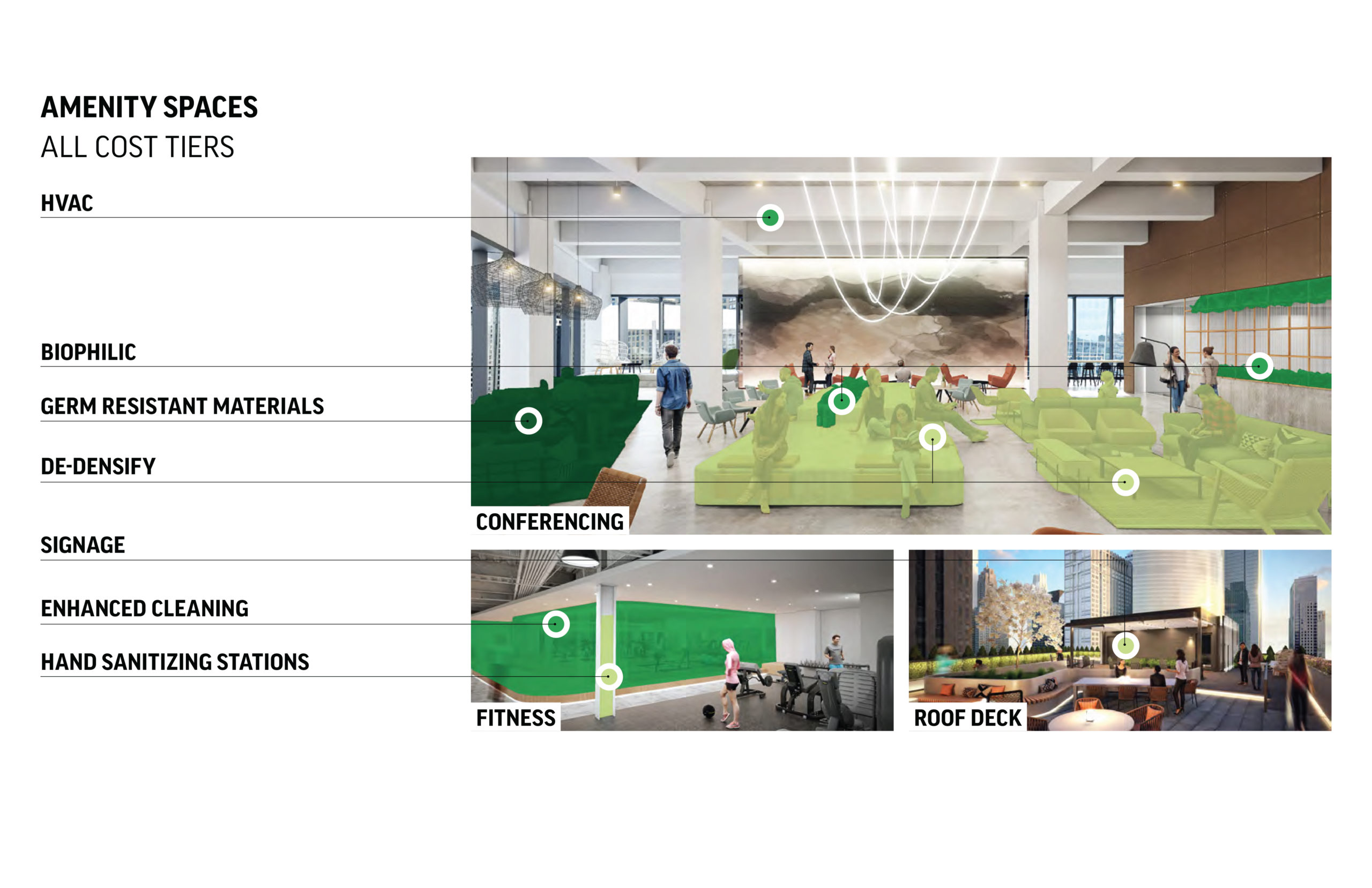
 |
 |
 |
- Schedule amenity spaces with spatial distancing (2 weeks)
- Spatial distancing of shared furniture + equipment (1 week)
- Wellness + safety signage – see Spark kits (1 week)
- Hand sanitizer stations (1 week)
|
- Enhanced HVAC filtrations (MERV) rating (4-6 weeks)
- Implement Biophilic attributes (4-6 weeks)
- Enhanced cleaning protocols (1 week)
- Infrared thermal monitoring (1-4 weeks)
|
- Touchless access (8-12 weeks)
- Introduction of germ-resistant materials (6-8 weeks)
|
 Spec Suites + Marketing Suites
Spec Suites + Marketing Suites
These areas can be a useful tool to show tenants how to implement protocols within their own space
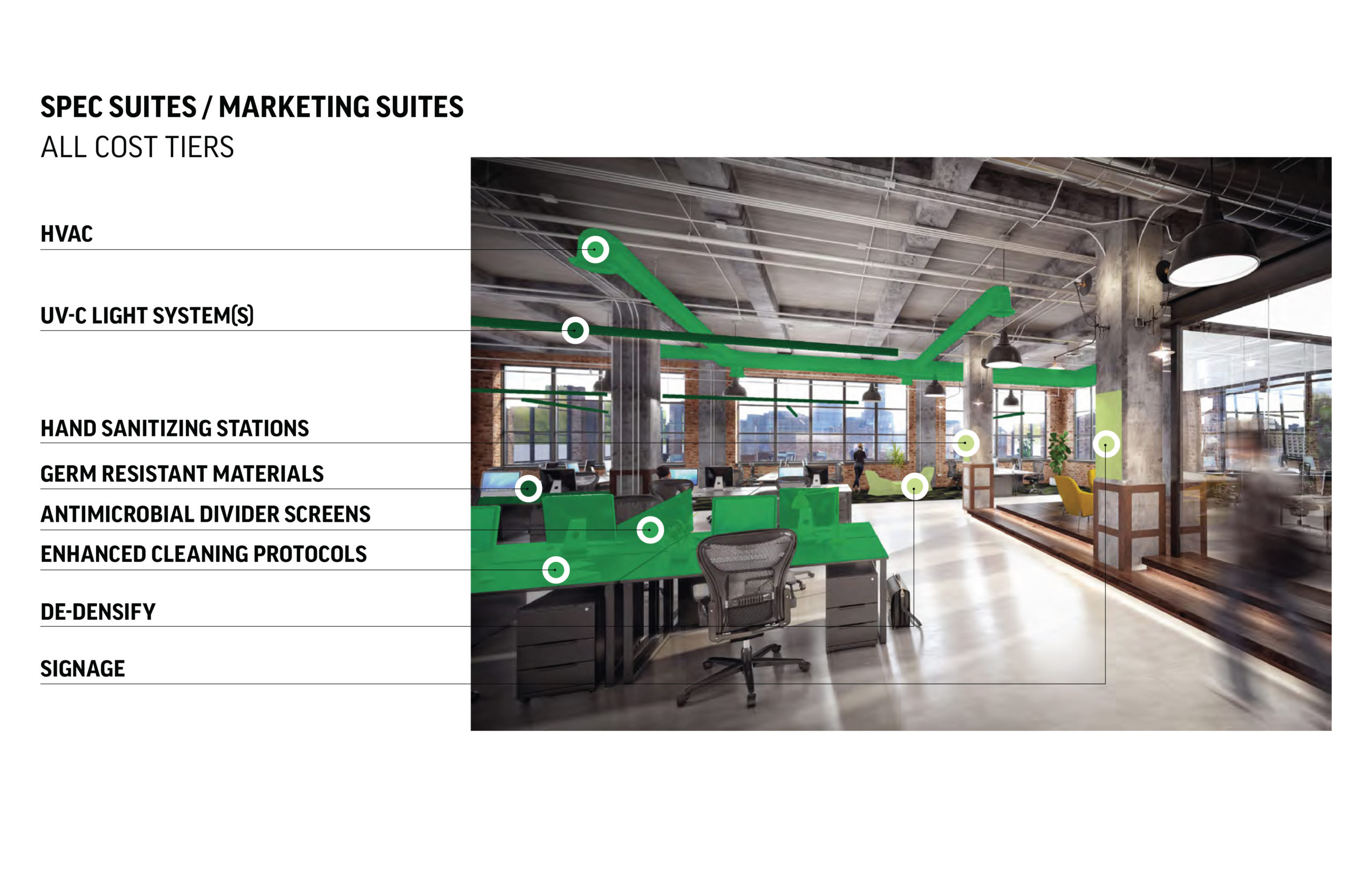
 |
 |
 |
- Social distancing at work stations (1 week)
- Wellness + safety signage – see Spark kits (1 week)
- Hand sanitizer stations (1 week)
|
- Enhanced HVAC filtrations (MERV) rating (4-6 weeks)
- Enhanced cleaning protocols (1 week)
- Fresh air via HVAC setting / window access (4-6 weeks)
- Implement Biophilic attributes (4-6 weeks)
|
- Introduction of germ-resistant materials (6-8 weeks)
|

![]() Arrival + Circulation
Arrival + Circulation


 Common Public Spaces
Common Public Spaces


![]() Amenity Spaces
Amenity Spaces


![]() Spec Suites + Marketing Suites
Spec Suites + Marketing Suites







